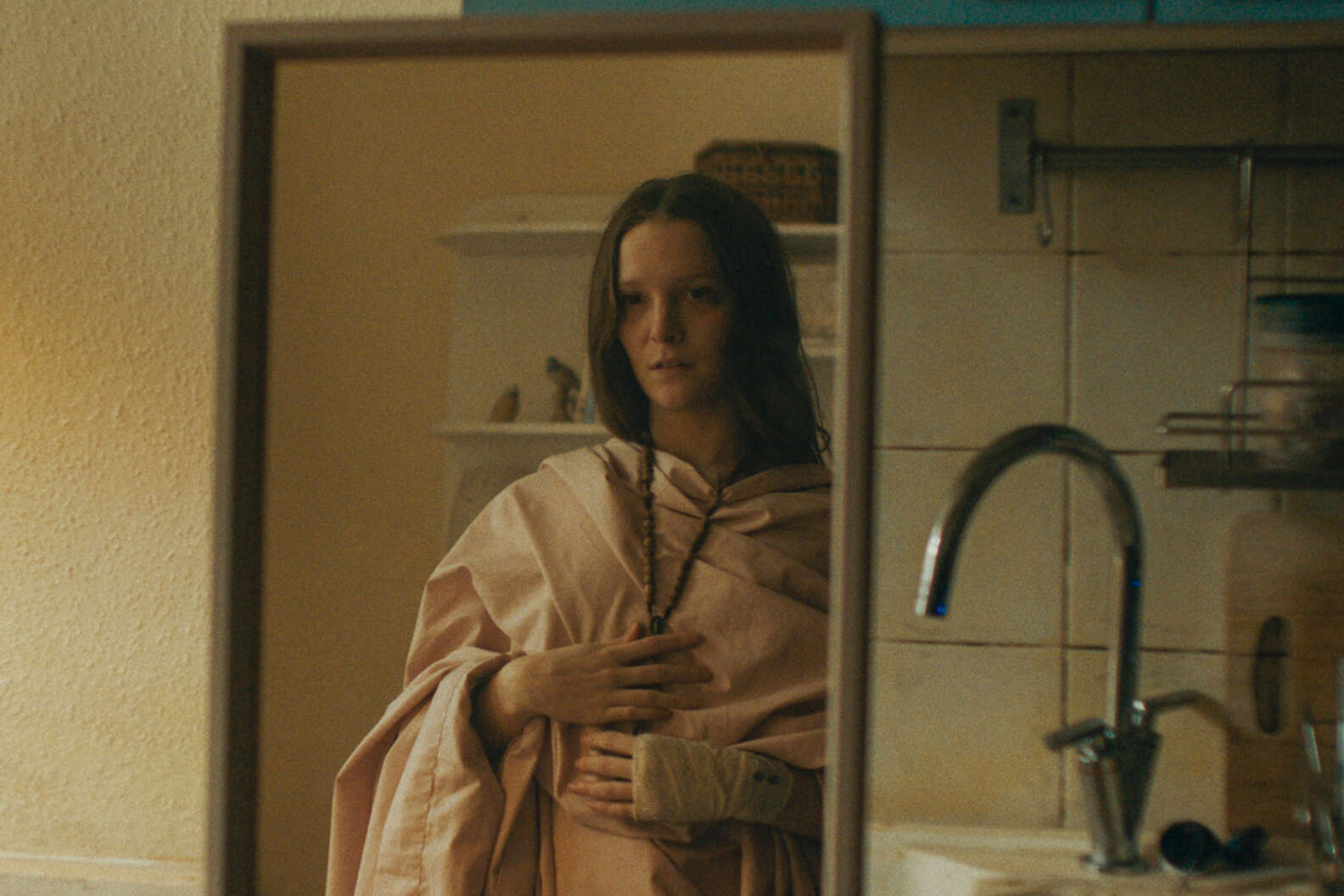Table of Contents Show
Saint Maud, Rose Glass’s debut 2019 psychological horror film, recently became available to stream for US viewers on both Amazon Prime and Hulu on May 13, 2021. The film was long-awaited, as the theatrical release of the film was postponed in 2020 due to the Coronavirus outbreak and was ultimately pulled from being released in US theaters. Saint Maud follows its character of the same name, Maud (Morfydd Clark), a nurse who discovers religion after a traumatic accident at the hospital she worked at.
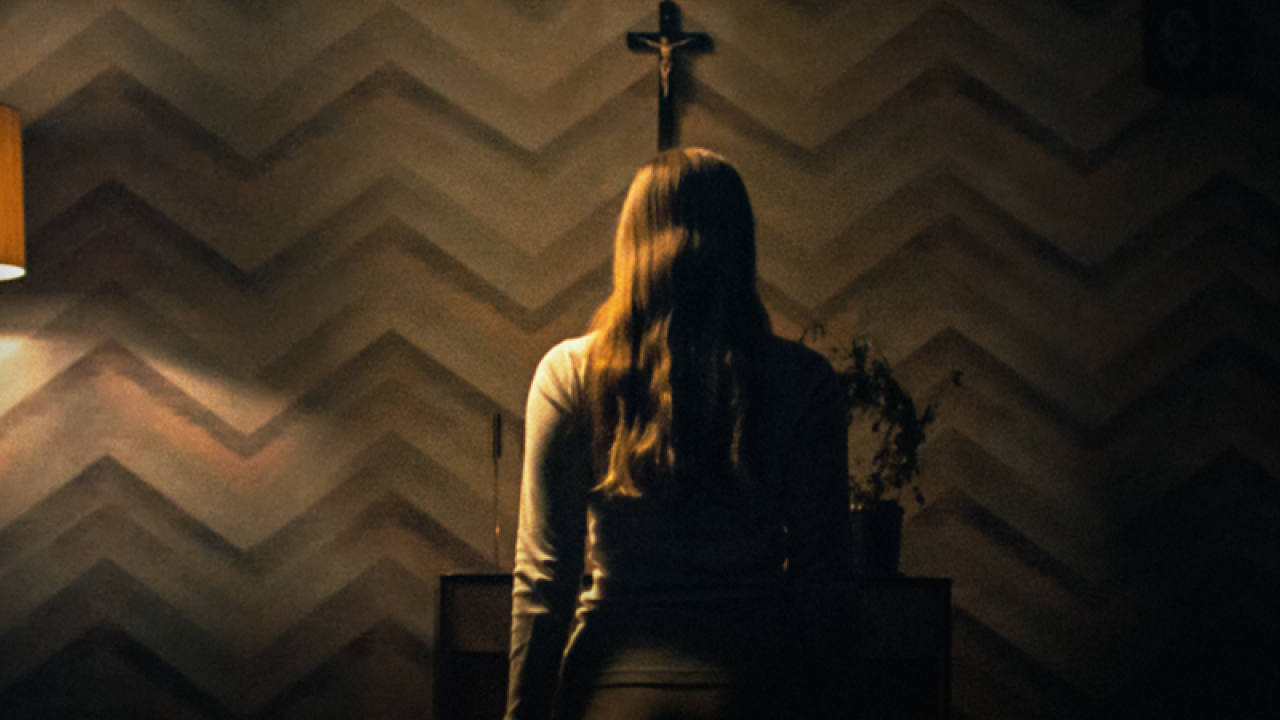
She obsessively works to become saintly by ritualistically inflicting physical pain upon herself, living in isolation, and attempting to save her terminally ill patient, Amanda Kohl’s (Jennifer Ehle) soul. The uneasiness of Saint Maud is rooted in the blurred lines and similarities between religious catharsis and mental illness.
The Slow Unravel Of Maud
While Maud’s descent into psychosis spirals quickly in the final third of Saint Maud, we’re given a trail of breadcrumbs that leads to her eventual demise. The audience learns through flashbacks that Maud, at her old hospital job, accidentally killed someone while trying to revive them and is now traumatized by the experience. While struggling to cope at the time of the incident, she looks up towards the ceiling and sees, for the first time, her manifestation of God in the form of a cockroach. At the beginning of the film, she is now a recent convert to Christianity and will be working as a private nurse. When we’re first introduced to Maud inside her claustrophobic apartment, her first deliberate action is to close the only window that provides any access to the outside world — thus, making it clear that she’s trying to separate herself from others. This is our initial glimpse into her purposeful isolation that continues throughout Saint Maud.
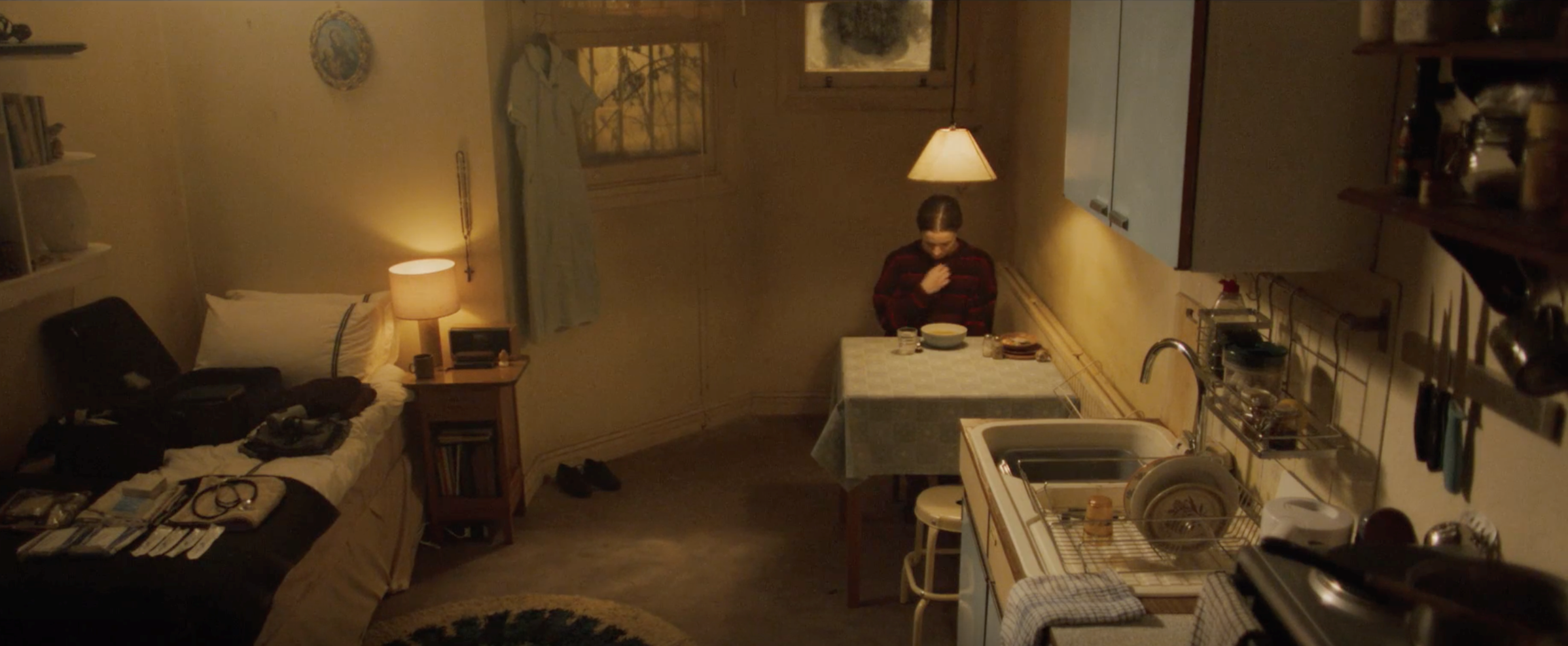
Early on, she tells a man that she’s going to meet a friend, but the audience sees her spending the rest of the evening walking along the ocean and dining alone. As she’s walking on the wet pavement along the shoreline, humming happily to herself, the angle of the shot in conjunction with the street lights reflecting against the damp walkway gives the illusion of Maud walking on water akin to Jesus; we see that she thinks of herself as holy and is proud. During this walk, her bubble is quickly burst when a woman starts calling out to her using the name ‘Katie,’ to which Maud is visibly distressed. The woman, we learn, is a hospital coworker named Joy (Lily Knight) from Maud’s pre-incident life. Joy seems genuinely eager to catch up with her, but Maud ends the conversation as quickly as possible, though not before Joy offers up her phone number.
Through this interaction, we learn how deep-rooted Maud’s total rejection of her old self, ‘Katie,’ is. The name ‘Maud,’ while not biblical, has various meanings centered around “battle-mighty” and “mighty in battle,” any of which she could see to represent her religious aspirations. The name change is one of many hints of Maud’s desire to lose herself completely to sainthood. Additionally, she seems to suffer from grandiosity and has an unrealistic sense of superiority; her prayers to God insist that she must be meant for something more than her current situation. During her early inner monologues, she states she has “little time for creative types as they tend to be rather self-involved” and calls the town a “dump,” all with a self-absorbed air before quickly backpedaling on her harsh words.
Two Shades Of Trauma: Maud & Amanda
Early in Saint Maud, the audience is introduced to Amanda Kohl, the woman Maud is caring for. A forty-nine-year-old woman with stage four cancer of the spinal cord. Via Maud’s voiceover and shots of sheet-covered promotional posters and long-abused toes, we learn that Amanda used to be a dancer and choreographer who can no longer do these things due to her deteriorating health. With Maud’s coping mechanisms to trauma hinted at, we now are given a new female character to see how their methods differ. Amanda, unlike Maud, is shown to drink to the point of retching and appears to be a chain smoker. Similar to Maud; however, we see that Amanda also reacts by isolating herself and is sitting on the precipice of being completely alone — her only company being her live-in nurse, a man who used to pine after her physically, and a woman named Carol (Lily Frazer) who she pays to have sex with her.
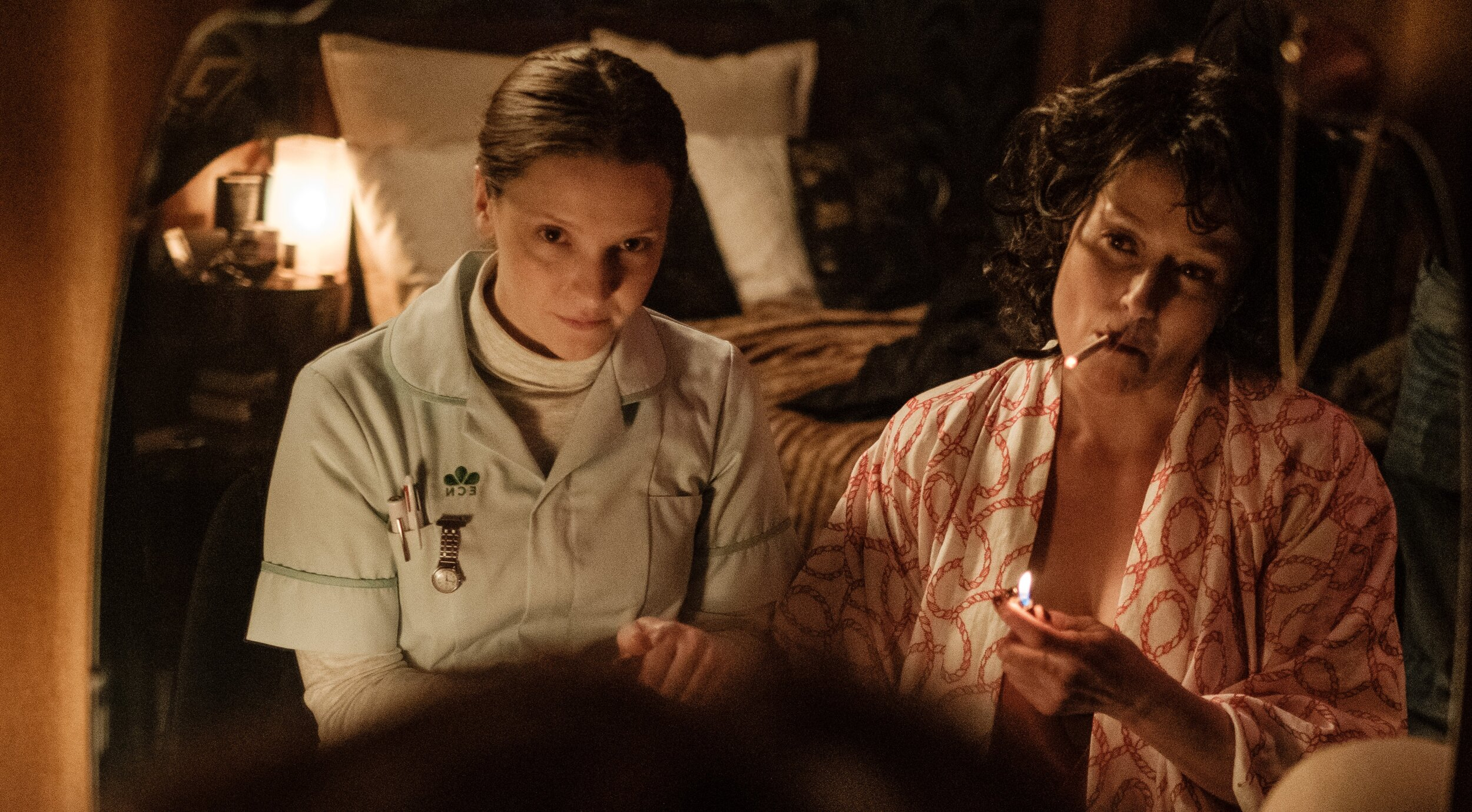
Through the characters of Maud and Amanda, Saint Maud explores the effects isolation can have on a person, particularly when used as a coping mechanism. Both characters are in a position to reach out to others for support: Amanda has Carol and an array of people from dancing days, and Maud has Joy. Their cries for help are received differently by their respective groups, with Amanda’s acquaintances flocking to her side for her birthday party, whereas Joy doesn’t meet with Maud during her downward spiral. Amanda’s support system, or lack of one in Maud’s case, helps to pave their paths to either maintain or lose their sanity, respectively.
The Unhealthy Savior Complex
From the beginning of Saint Maud, Maud is shown to pray to God, asking for guidance on her purpose. So once Amanda expresses uncertainty in what happens after death, Maud is more than eager to label Amanda’s salvation as her calling. From Maud’s point of view, Amanda is in an emotional space very near to where Maud was at the beginning of the film. Though different (Maud accidentally killed someone whereas Amanda is dying), Maud believes that Amanda needs to be pushed in the direction of salvation as she once was. During a late-night talk about God’s presence in everything, Maud is first nicknamed “my little savior” by Amanda.
This instills a toxic savior complex within Maud that causes her to obsessively care for and work towards what she believes to be Amanda’s salvation. Maud sees this as a God-given purpose that in her eyes is reinforced by the unexplainable debilitating physical and emotional ecstasy she experiences as she leaves Amanda for the night. The unnerving scene is accompanied by a shot of Maud slowly climbing up the house stairs as if inching closer to her goal of becoming closer to God.
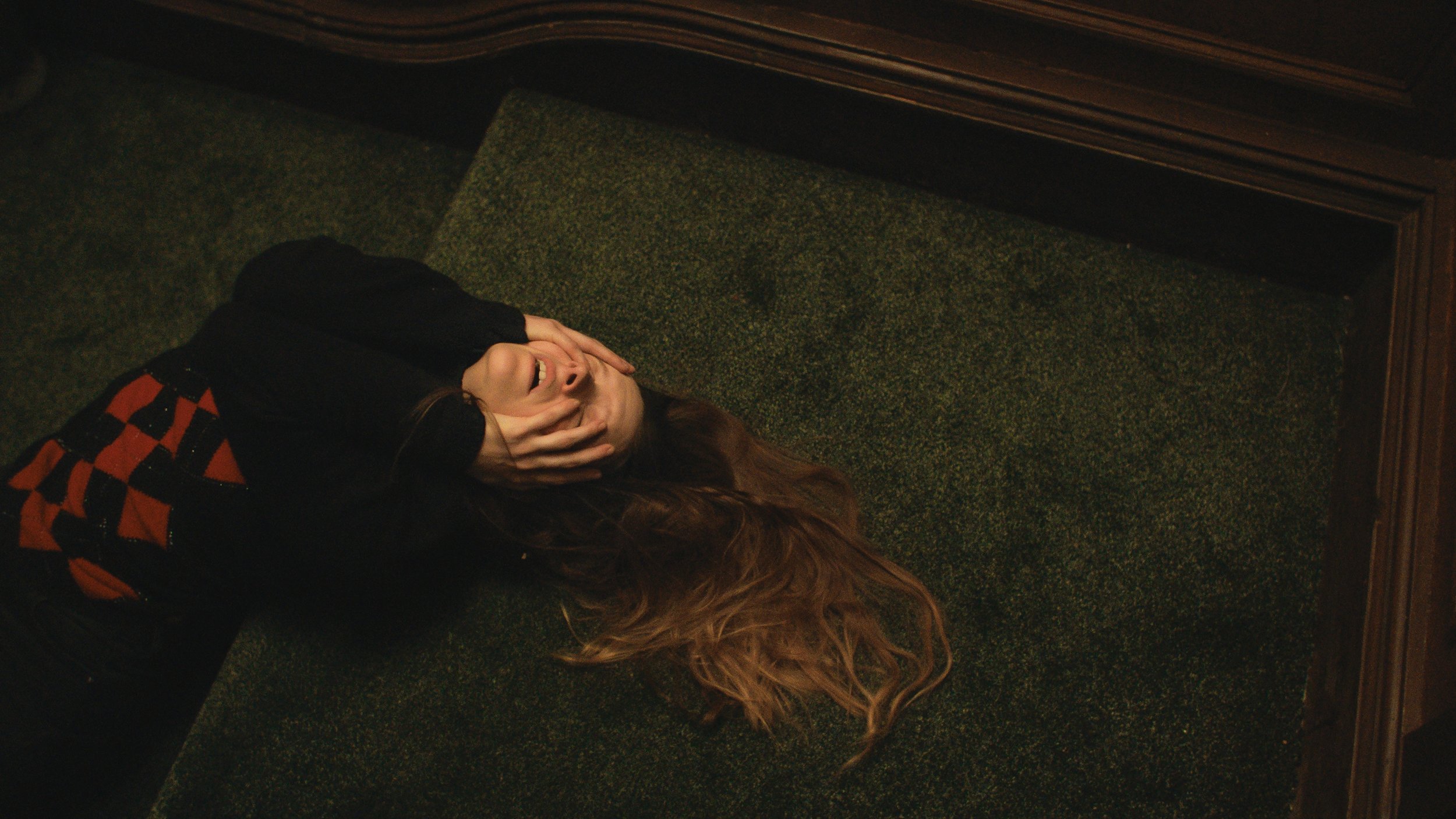
Maud not only experiences psychosomatic delusions and hallucinations when she’s successful with her adherence to being saintly but also when she fails. Amanda has a companion named Carol, who regularly visits to spend nights together; this relationship between the two women goes against Maud’s plans for Amanda’s salvation. Not only does Maud attempt to use isolation to purify herself, but her method for saving Amanda’s soul involves isolation as well. Maud implores Carol to stay away from Amanda, stating that it’s a matter of life and death, leaving Carol stunned but seemingly compliant. After what Maud assumes was a successful plea, she is elated to find that Amanda’s phone was silent for the entire day; with her newfound obsession with Amanda’s salvation, her own isolation is no longer enough. However, her celebration is short-lived when Carol finally reaches out to Amanda. Maud begins to fear that she’s falling in her duty to God, and she begins to fixate on water swirling down both a sink and bathtub drain, alluding to her fear of both hers and Amanda’s fall from grace.
Desperation For The Voice Inside Her Head
As a recent Christian convert with no tether to the people around her, Maud is creating a religious system all on her own. She has no convent and doesn’t attend religious sermons or ceremonies. Instead, she rejects organized religion as a social construct, leaving her practices to her own whims. We see this in the scene when Maud is looking at Morton Paley’s William Blake (1978) book that Amanda gifted her. As she gazes upon the illustrated pages that depict God, Jesus Christ, and angels, she is absolutely engrossed. Similar to a child, she begins to copy the angels’ body postures and hand placements, as if what she does to and with her physical body is representative of her spirituality.
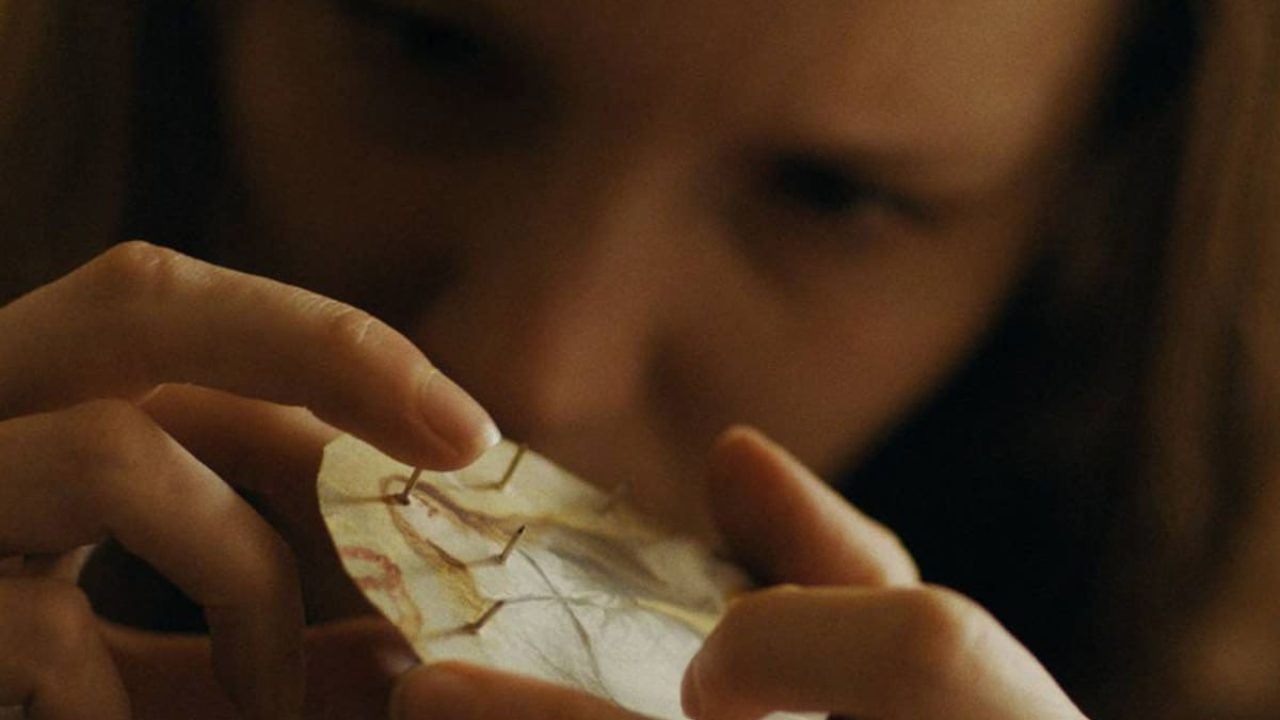
Not only does Maud isolate herself as a form of emotional torture, but she also physically causes harm to herself, becoming more extreme each time; she believes the more intense the sacrifice, the more devout a servant she is to God. Her first physical sacrifice is when she opens a new bag of microwavable popcorn, pours out some of the kernels, and proceeds to kneel upon them while praying. She winces slightly from the pain but otherwise comes out of it unscathed. Eventually, as Maud becomes more fixated on her worthiness, she seems to become stigmatic. That is, she produces injuries and scars to areas of her body corresponding to the crucifixion of Jesus Christ, namely, her hands and feet. For her hand, Maud burns herself on a hot skillet.
The way Maud’s hand is slammed against the burner is ambiguous, and at this point in the film it is unclear whether she willfully did it or was forced to. She also exacerbates the burn by peeling away at her skin as it begins to scab up. Her feet, on the other hand (pun not intended), are injured by sticking pushpins through a card of Mary Magdalene, placing them inside of her shoes, and proceeding to walk with the shoes on.
God Finally Appears
Her attempts to prove her worthiness and devotion result in extremely vivid hallucinations, all of which appear to the audience to be reality, pulling us into her own perception and along her journey. For example, while wavering in her faith, she appears to become possessed or controlled and is shown floating in her apartment with a cacophony of firework bursts sounding from the outside world. However, it is through two of her supernatural experiences that we finally realize how mentally unstable she’s become an unreliable her perspective is.
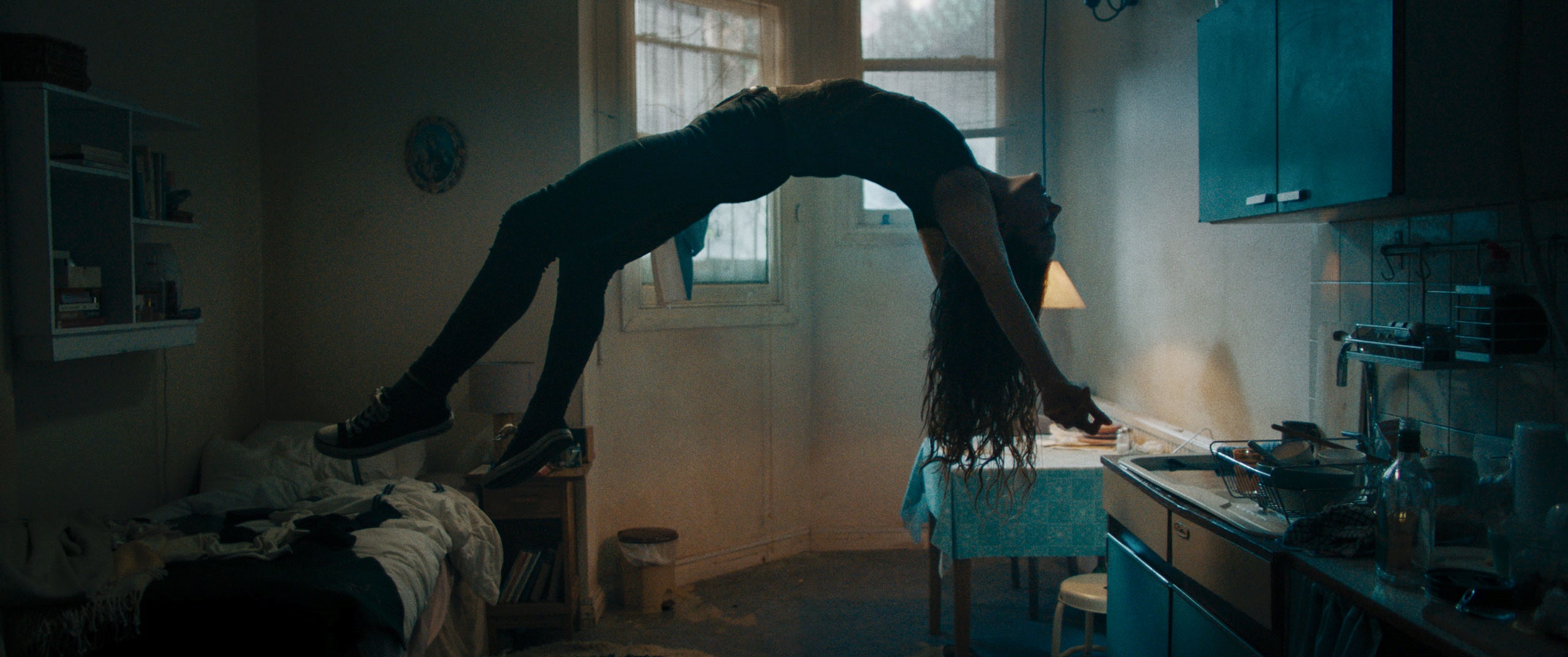
The first of these hallucinations happens in the middle of the night, amidst a nearly pitch-dark bedroom. As Maud searches for affirmation of the righteousness of all that she’s done for God, the unintelligible whispers that have persisted throughout the entire film finally become a deep Welsh voice that she believes to be the voice of God. The voice confirms that life is just a game and that she is so close to joining them; again, the more she loses her sanity and gives herself up, the closer she feels she is to God.
While once acceptable, if someone insists that they’ve heard voices inside their head, it is no longer considered divine intervention but rather a cause for alarm for the person’s mental health. An important note: The voice of God is none other than Maud’s actress, Morfydd Clark’s, voice pitched down. From a directorial standpoint, the voice of God could’ve easily been played by another actor or actress, but narratively, with the voice of God being her own, this further exemplifies Maud’s delusional state of mind. Maud truly believes that amidst her self-inflicted isolation, she has finally gained the company of God. Instead, it seems she is as lonely as ever, if not even more so, and is instead only talking to herself.
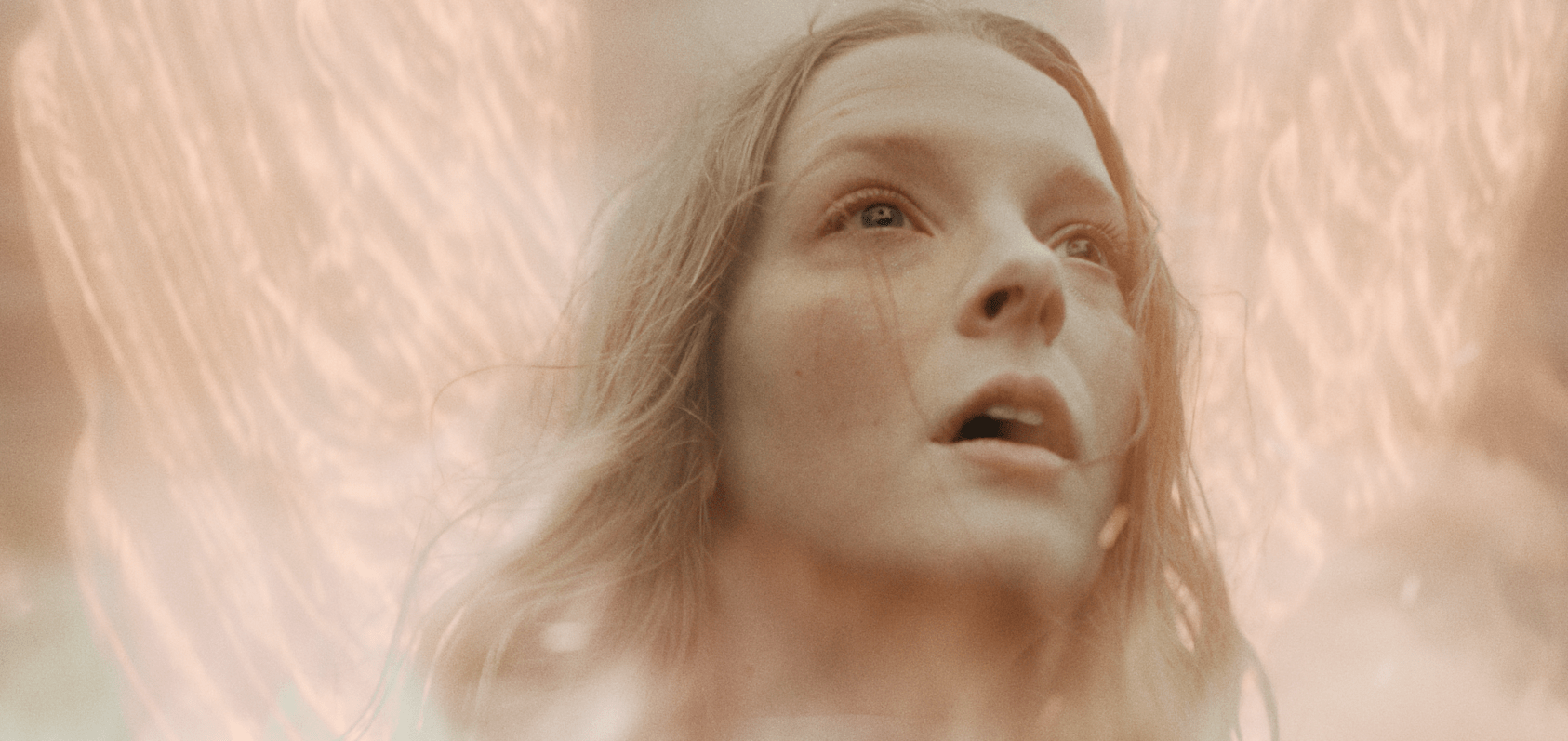
The second indication of her deteriorated mental health state is in the final scene of Saint Maud. After dousing herself and her makeshift robes in acetone, she sets herself ablaze in the presence of a group of bystanders. For the first time in her life, people are paying attention to her and can’t help but watch. As the flames rise, she experiences complete catharsis, with tears filling her eyes, as her luminescent angel wings spring out and the people around her fall to their knees at the glory of her presence; the musical score swells to match her spiritual deliverance. The shot then abruptly cuts to Maud’s mostly-burnt face screaming in utter agony. The disturbing cut jolts the viewer and removes any notion of Saint Maud being about anything other than a mentally ill woman just as quickly.
From ‘Katie’ To ‘Saint Maud’
After following Maud’s spiral, it’s essential to reflect on how it began versus how it ended. Let’s consider the first time we see Maud during the opening scene — she’s sitting down on a sickly-green hospital floor with her arms stretched out at a forty-five-degree angle, hands covered in bloodied gloves after the traumatic accident. By the final scene of Saint Maud, she is glowing brightly with her arms fully outstretched amidst a group of people on their knees, reminiscent of Jesus Christ’s depictions. No longer are her arms down by her sides, they are now fully out in religious symbolism-fashion, expressing her mentality of having become saintly, but it’s only once she’s given up absolutely everything.
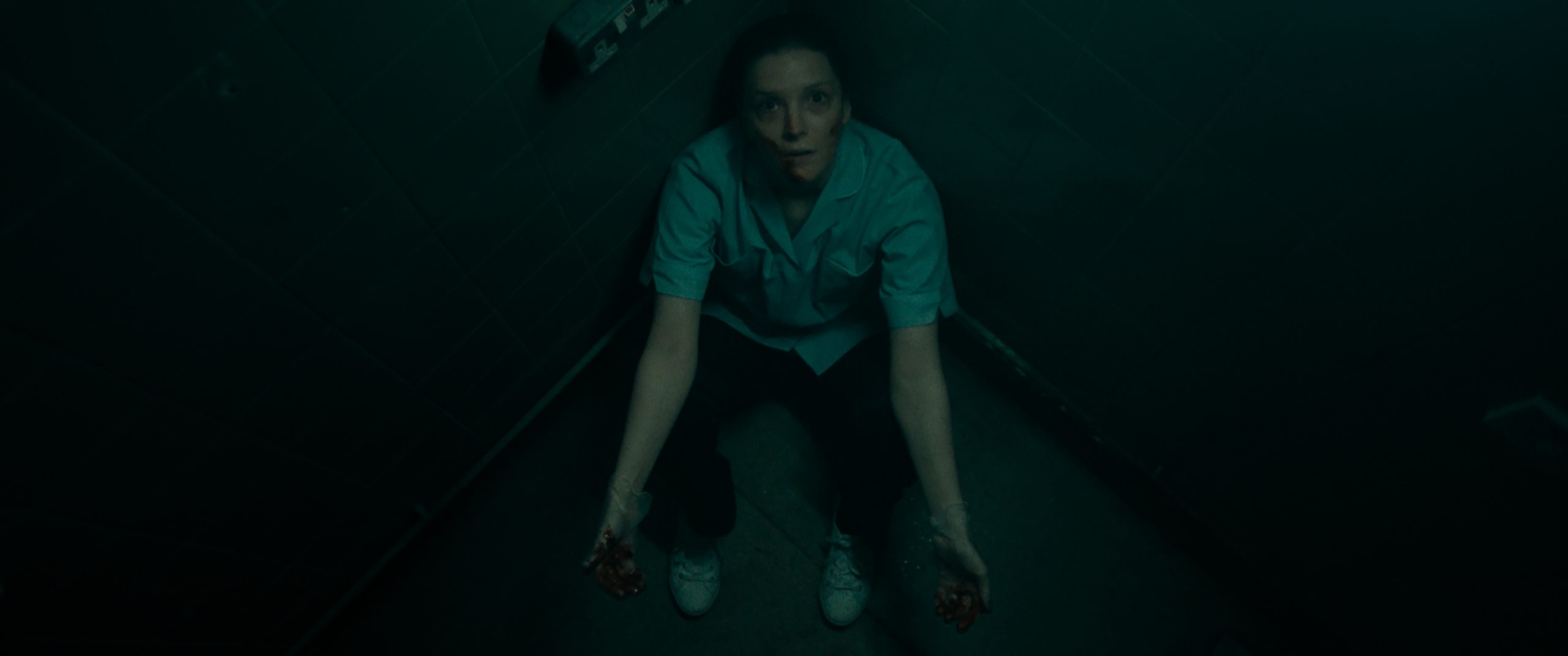
Through her journey to sainthood in Saint Maud, Maud eventually loses her sanity. Her mental illness takes a firmer grasp of her life the more she adheres to what she believes to be saintly. Aside from her eventual delusions and psychosis, her loss of control and self is further symbolized by her use of fire throughout the film. When she is uncertain of her path and questions her devotion to God, her lighter and matches don’t properly catch on multiple occasions. However, once she completely loses her grip on reality, the lighter works perfectly and without hesitation. It is only after losing all sense of life, self, and sanity that the fire burns properly, and she is enveloped up in a sea of flames.
Saint Maud: Lonely No More
Saint Maud, while a horror film, isn’t one in the conventional sense. The destruction Maud causes to both herself and others is never intentionally cruel or completely unjustified, which isn’t always the case in other films within the genre, though there are indeed horror films steeped in mental health issues. Instead, Saint Maud follows a mentally ill woman who yearns for salvation as a way to forgive herself for accidentally killing someone.
Her delusions are real to her, as they are to the audience, making her unraveling all the more understandable and relatable. Maud is a woman who spends the entire film completely isolated and finally finds solace in the presence of others once she passes the point of no return. Saint Maud is a cautionary tale about the dangers of loneliness, obsessive fanaticism, and unrecognized and untreated mental illness, and its methods are unsettlingly effective.
